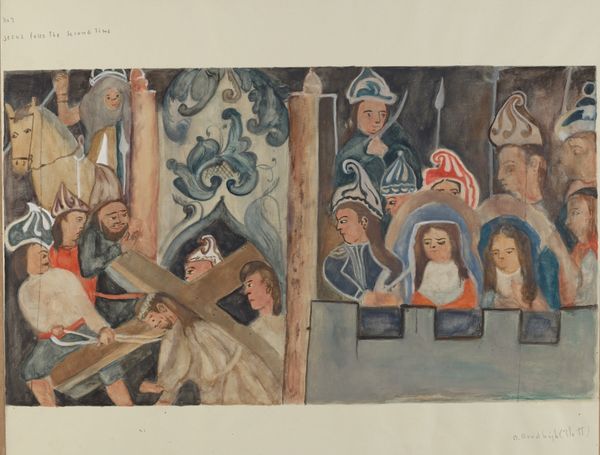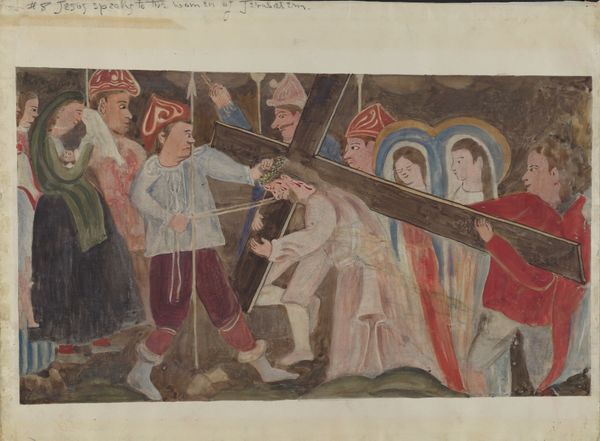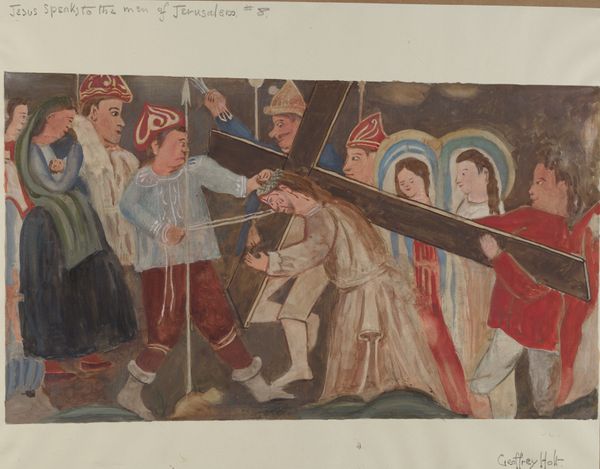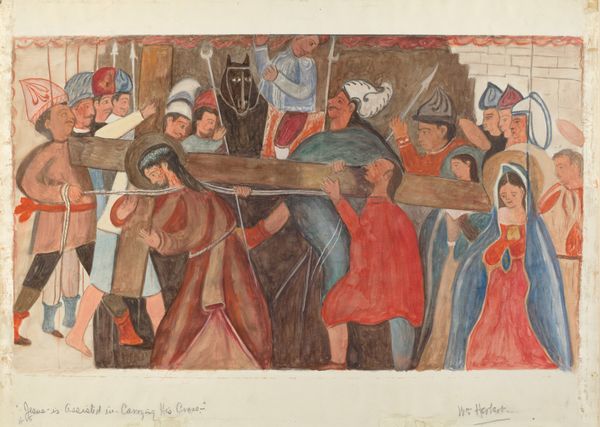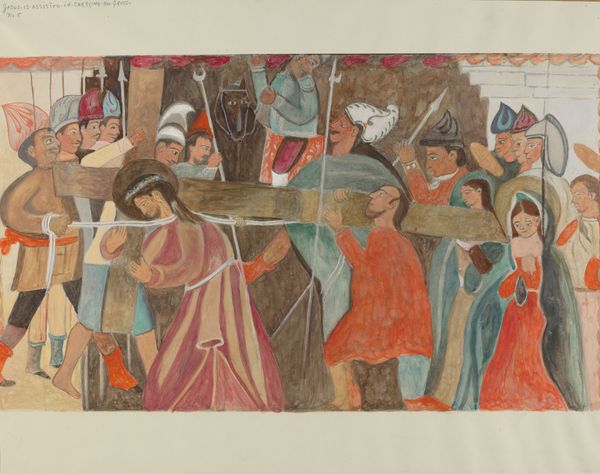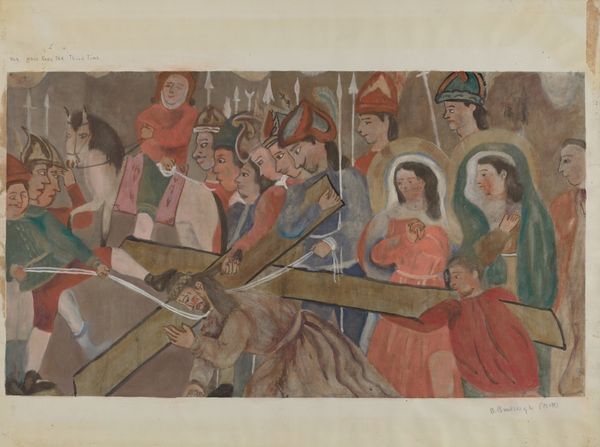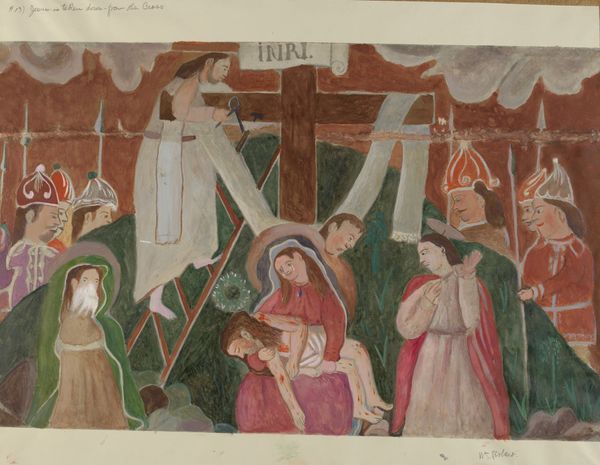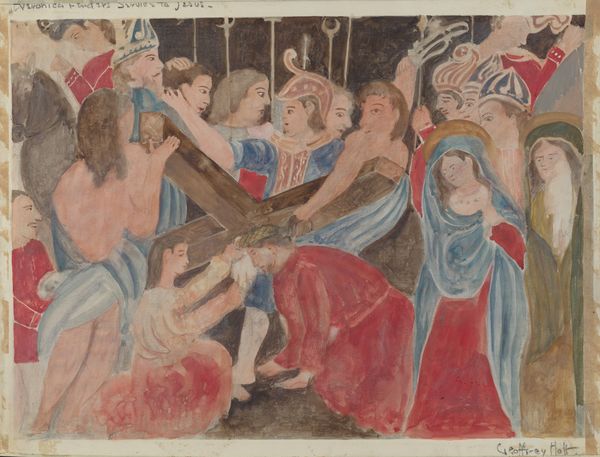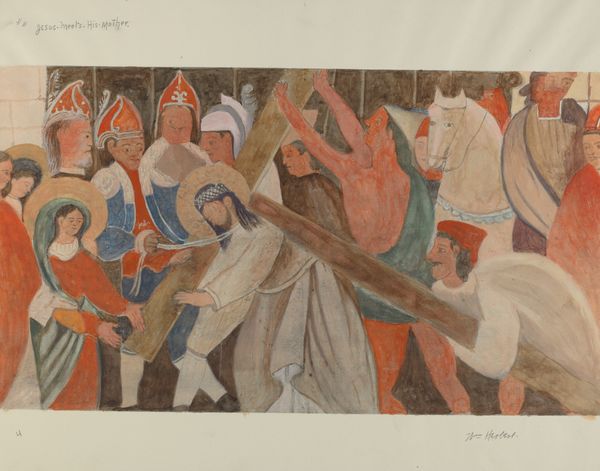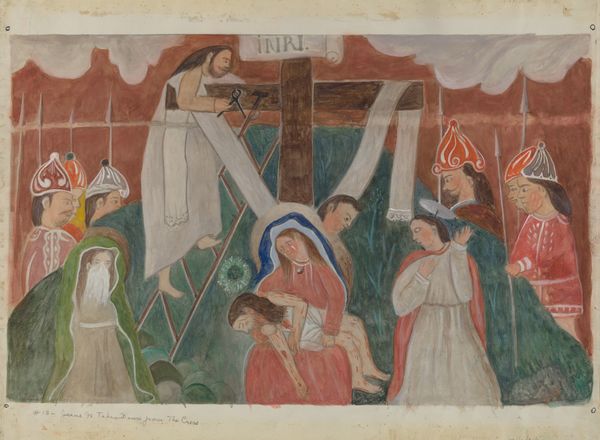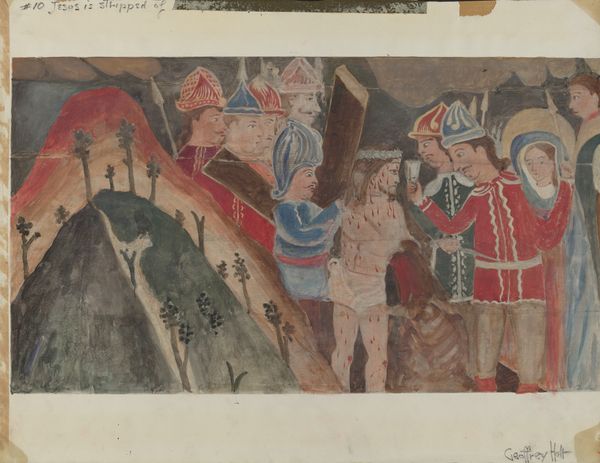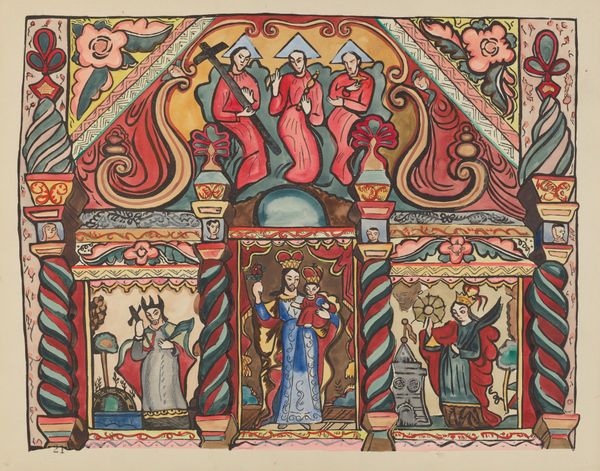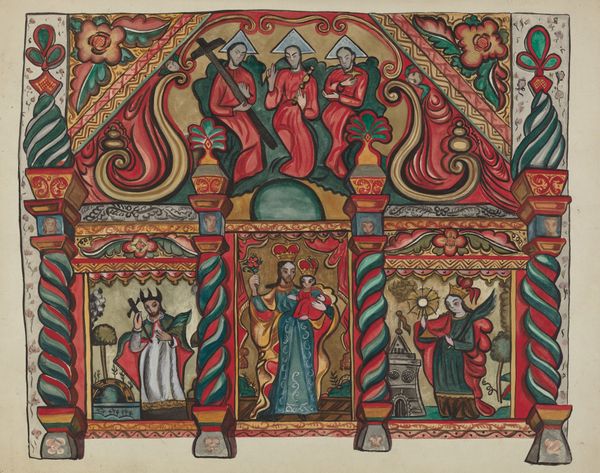
Station of the Cross No. 7: "Jesus Falls the Second Time" c. 1936
0:00
0:00
drawing, tempera, watercolor
#
drawing
#
water colours
#
narrative-art
#
tempera
#
figuration
#
oil painting
#
watercolor
#
watercolour illustration
#
history-painting
#
academic-art
#
watercolor
Dimensions: overall: 37.2 x 50.4 cm (14 5/8 x 19 13/16 in.) Original IAD Object: Approximately 30 x 50 in.
Copyright: National Gallery of Art: CC0 1.0
Editor: So, this watercolor, tempera, and possibly oil painting is "Station of the Cross No. 7: "Jesus Falls the Second Time," created around 1936 by Beulah Bradleigh. I’m immediately struck by the raw, almost folk-art style. How does the artist's choice of medium impact the meaning of this image? Curator: It’s interesting to consider the materiality. Bradleigh deliberately eschews the slickness of academic painting, using accessible, perhaps even humble, materials like tempera and watercolor. This suggests a conscious choice to connect with a wider audience, bypassing the traditional, elite art market. Consider also how the application of watercolours affects the subject of narrative itself. Editor: So, you’re saying the choice of these readily available materials democratizes the subject matter? It's a story for everyone, told in a way accessible to everyone? Curator: Precisely. The slight crudeness of the lines and the flatness of the colors bring it closer to a craft tradition than high art. Where would we place this outside of established conventions? Perhaps the intention was to provide the means for accessibility rather than restrict her art to high art status? Editor: I see what you mean. There’s also the clear labor involved in creating something like this. Each brushstroke, each application of colour feels very deliberate and present. What impact does it have for Bradleigh to make art through this painstaking production of figuration? Curator: The act of making, the visible effort, highlights the physical suffering depicted. Each station of the cross is itself an act of labour; of performance, of human struggle. Bradleigh amplifies the human toil involved. This process is echoed both in the act of painting it, and its subsequent representation within her work. How does that relate to the wider Depression-era context this was made in? Editor: That’s a compelling point. Thinking about the Great Depression, with so many struggling to survive, the labor-intensive aspect of the work and the use of commonplace materials seem particularly relevant. It grounds the religious narrative in a tangible, social reality. I appreciate you framing this piece in terms of the artist's choices regarding material. Thanks! Curator: And I you, for drawing that connection with the social fabric, in the economic climate, that allowed these images to be relevant.
Comments
No comments
Be the first to comment and join the conversation on the ultimate creative platform.
